Ants can be a real headache for homeowners, especially when they’re sugar ants. To get rid of sugar ants, you’ll need to know what they are, how they scavenge, and which extermination methods are most effective against their species. Here’s how to get rid of sugar ants.
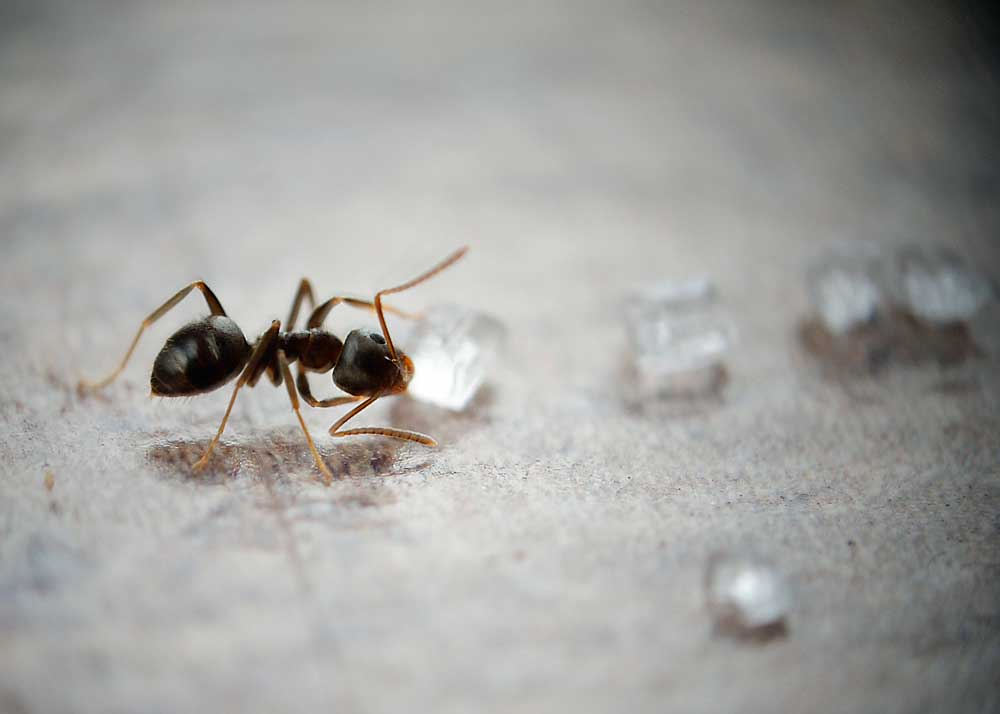
Consider this your all-purpose guide to identifying and killing sugar ants.
Table of Contents
How to Identity Sugar Ants (4 Species)
The first thing to know about sugar ants is that there are several species called “sugar ants.”
4 Species of Sugar Ants: Some of the more common species include:
- Monomorium pharaonis (pharaoh ant)
- Tapinoma sessile (stink ant)
- Camponotus consobrinus (banded sugar ant)
- Crematogaster (acrobat ant)
Despite sharing status as household pests, they’re quite different, so it’s important to be able to distinguish them.
1. Pharaoh Ant
- Scientific name:Monomorium pharaonis
- Common names: Pharaoh ant
- Region: Asia, Europe, and the Americas
- Habitat: Indoors, particularly in small, dark places
- Diet: Anything
- Appearance: Light yellow to reddish-brown in color, 1.5 – 2 millimeters in size
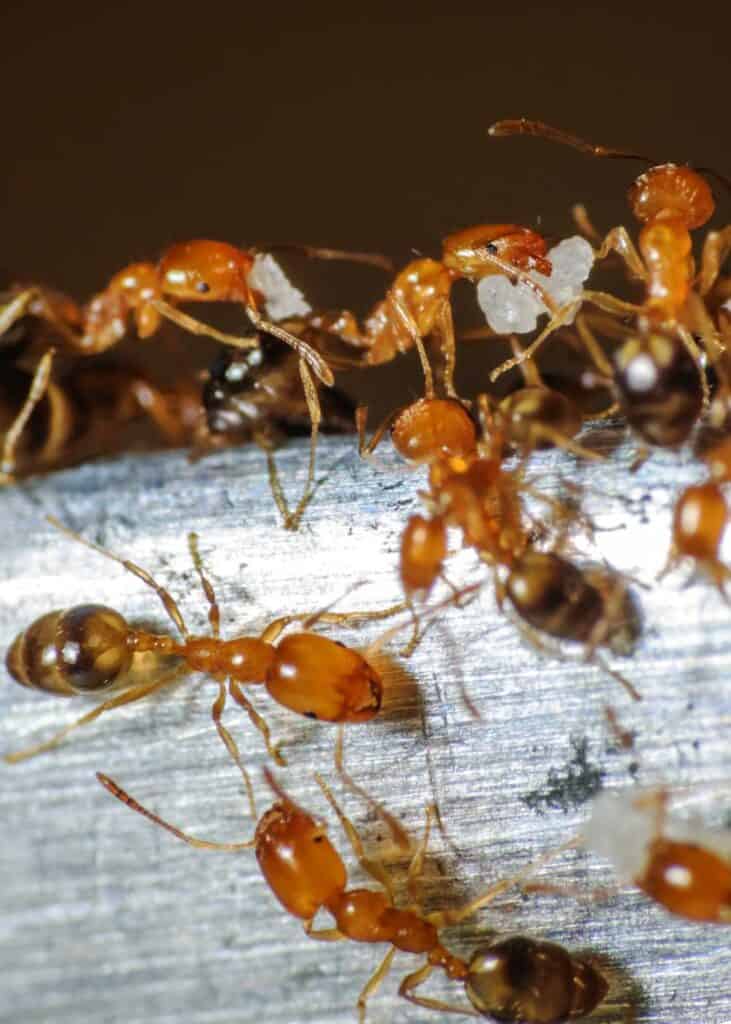
Pharaoh ants are a common indoor pest. They can be found in buildings worldwide, including homes, schools, and hospitals. They tend to congregate in walls, under baseboards, in the corners of closets and cupboards, and around insulation material.
Pharaoh ants are another species that can be extremely hard to kill. This is because they live in fractured colonies with multiple queens spread out in several different places.
Additionally, when one nest is disturbed, it can break into multiple nests if some ants survive and splinter off into divided groups. You could turn a small problem into a big one with the wrong extermination methods!
Another gross fact about pharaoh ants is that they’ll eat almost anything.
While they prefer sweet things, they’ll also go for anything pungent enough to get their attention, including trash, leftover food, or dirty diapers.
2. Stink Ant
- Scientific name:Tapinoma sessile
- Common names: Stink ant, sugar ant, coconut ant, odorous house ant
- Region: North America (Canada, United States, Mexico)
- Habitat: Warm and dark places, especially those with heat
- Diet: Anything they can forage, but especially sugary foods
- Appearance: Dark, shiny bodies ranging from 1.5 – 3.2 millimeters in size
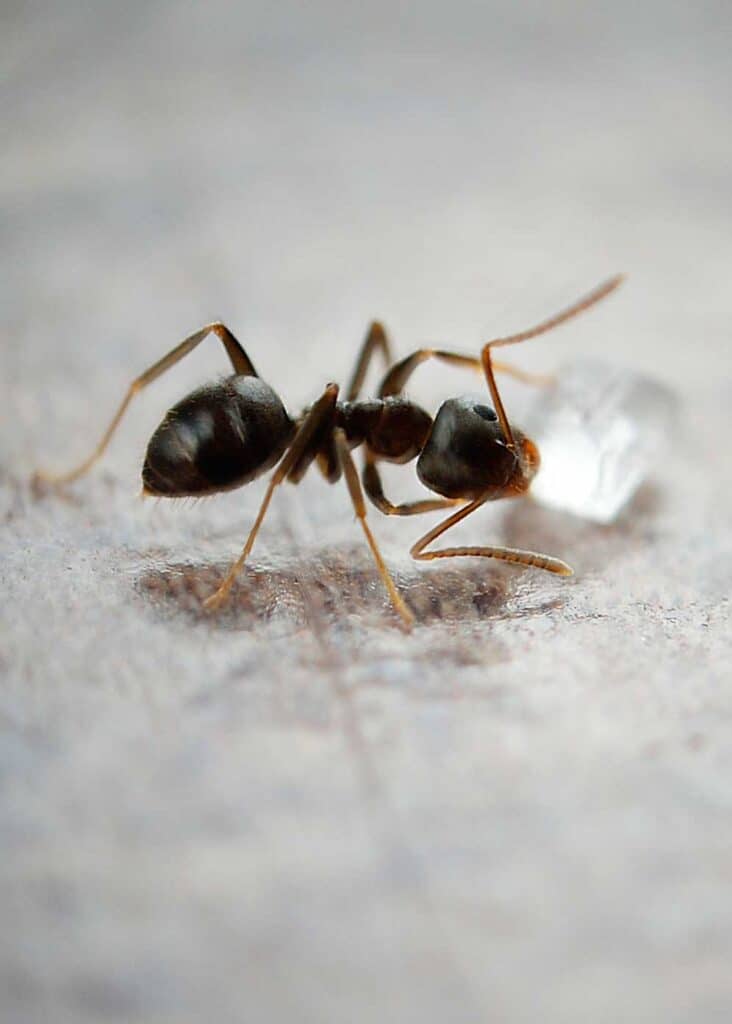
Stink ants get their name from the sweet and sour smell they emit when they’re crushed. It’s been described as smelling like blue cheese, rotting coconuts, or turpentine.
Like most foraging ant species, they’ll eat anything they can get their pincers on, but they’re especially fond of sweets.
Their primary food source in the wild is honeydew, a kind of sticky, sugary substance that other insects secret on plant sap, but they also enjoy anything sweet, floral, or with nectar.
Stink ants like warm places. Outside, this is usually under rocks or within garbage cans; inside, this means that they can be attracted to everything from the oven in the kitchen to the insulated walls of the attic.
One thing to note about stink ants is that they’re notoriously hard to eliminate. They’re tough little creatures that can survive for months without food, so even if you think that you’ve exterminated them all, they might just be lying in wait behind your walls.
3. Banded Sugar Ant
- Scientific name:Camponotus consobrinus
- Common names: Banded sugar ant
- Region: Australia
- Habitat: Holes and other dark places
- Diet: Trash, sugary secretions, insects
- Appearance: Brown or yellow bodies with black bands on either side, 5 – 15 millimeters in size
The banded sugar ant is a large ant native to Australia. It lives mostly outdoors, but it can also creep into buildings and become a household pest.
Like stink ants, banded sugar ants live off honeydew, or the sugary secretions of other sap-eating insects. They’ve also been known to munch on those insects, adding a carnivorous element to their diet.
You won’t be troubled by banded sugar ants unless you live “down under,” but they’re a species of sugar ant to know.
4. Acrobat Ant
- Scientific name: Crematogaster
- Common names: Acrobat ant, cocktail ant, Saint Valentine ant
- Region: Worldwide
- Habitat: Outdoors, usually in trees
- Diet: Other insects
- Appearance: Yellow to reddish bodies with black, heart-shaped abdomens, 2.6 – 3.2 millimeters in size
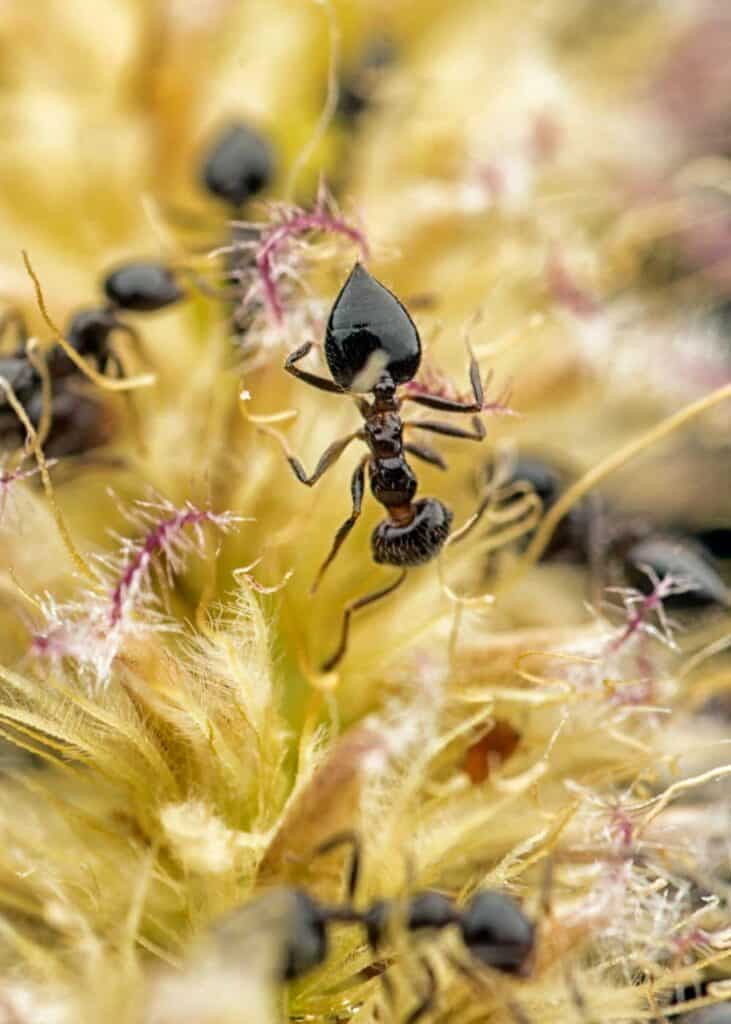
Acrobat ants get their name from their gymnastic abilities. When threatened, they raise their abdomens into the air in a show of aggression.
They’re also arboreal, meaning that they live in trees, so it’s common to see them scuttling around branches like tightrope artists in the circus.
Acrobat ants are less of a threat to homeowners than the other species on this list. They like to live outdoors, and their primary diet is other insects, including wasps, terminates, and grasshoppers.
When hungry, however, acrobat ants will follow their noses anywhere, including indoor buildings.
They prefer sweet things, which is why they’re sometimes called sugar ants. You can usually find them lining windows or creating marching lines in cracks and crevices that lead outside.
Another thing to know about acrobat ants is that there are over 400 sub-species of them, and variations can occur in things like size, color, and colony type.
Learn more about other little black bugs.
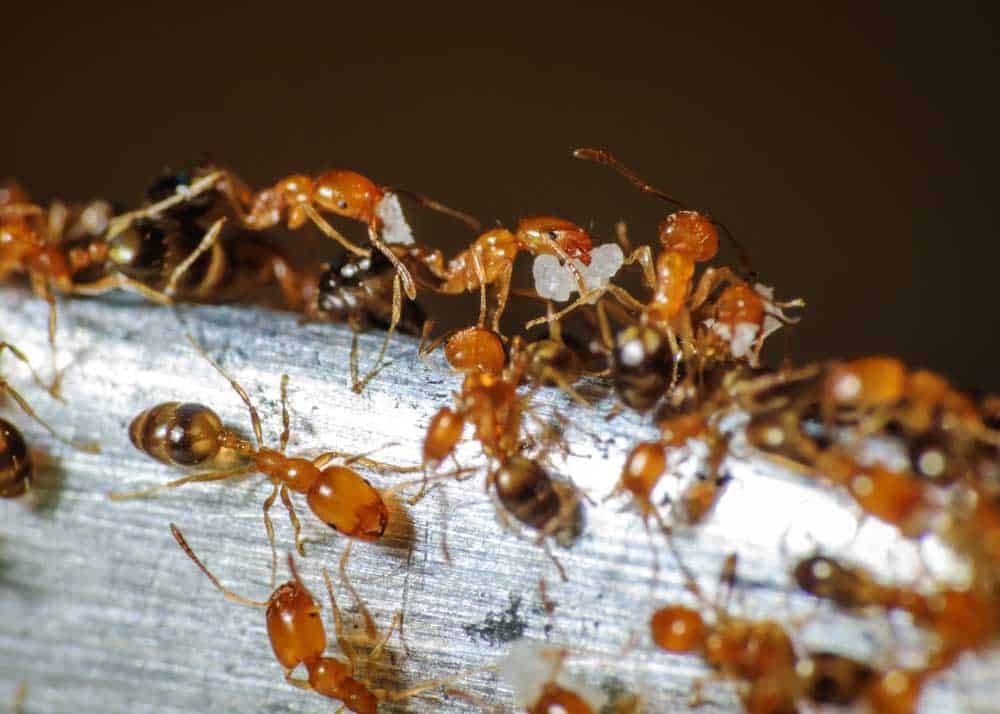
More reading: How to Get Rid of Carpenter Ants (12 Way) Kill and Prevent
How to Get Rid of Sugar Ants (4 Methods)
Now that you’re familiar with the different types of sugar ants, how can you get rid of them?
1. Identity Their Type
While extermination methods are the same for every type of sugar ant, it’s important to know what you’re dealing with.
Pharaoh ants, for example, can break off from one big nest into many smaller nests, so if you don’t kill every single one of them, you’re at risk of making your infestation even bigger than before.
2. Try Natural Methods
Natural methods can work against some infestations. Here are a few home remedies for ants:
- Essential oils. Ants are guided by scent, so a strong and off-putting smell like lemon or peppermint can act as a deterrent against them. Here are the 7 best essential oils for ants.
- Vinegar and water. Vinegar is a natural insecticide. Mix it with an equal amount of water for an effective DIY bug spray.
- Diatomaceous earth. Diatomaceous earth is a powder made from algae, so it’s an organic, non-toxic material that you can spread around doors and windows to prevent ants from entering.
3. Use Insecticides
If natural methods aren’t working for you, it might be time to seek a little chemical assistance.
Bug sprays are the quickest and easiest way to kill ants. Many of them contain something called boric acid, which is effective against ants, cockroaches, and termites alike.
Another thing to consider is “ant traps” or “ant baits.”
These will attract ants with poisoned bait that they carry back to their colonies and spread. Traps are available as everything from outdoor stakes to indoor floor strips.
4. Seal Off Their Entry Points
Last but not least, to prevent future infestations, figure out where the ants are coming from and plug up those entrances. Here are a few places to check:
- Vents
- Gaps in door and window frames
- Cracks and crevices by the floorboards
- Soft or rotted spots in wood and drywall
For gaps, you can use caulk or weather stripping to fill them or cover them.
For soft spots caused by things like water damage, you might need to replace them entirely with sturdier materials.
Looking for more? Here are 28 Animals that Eat Ants
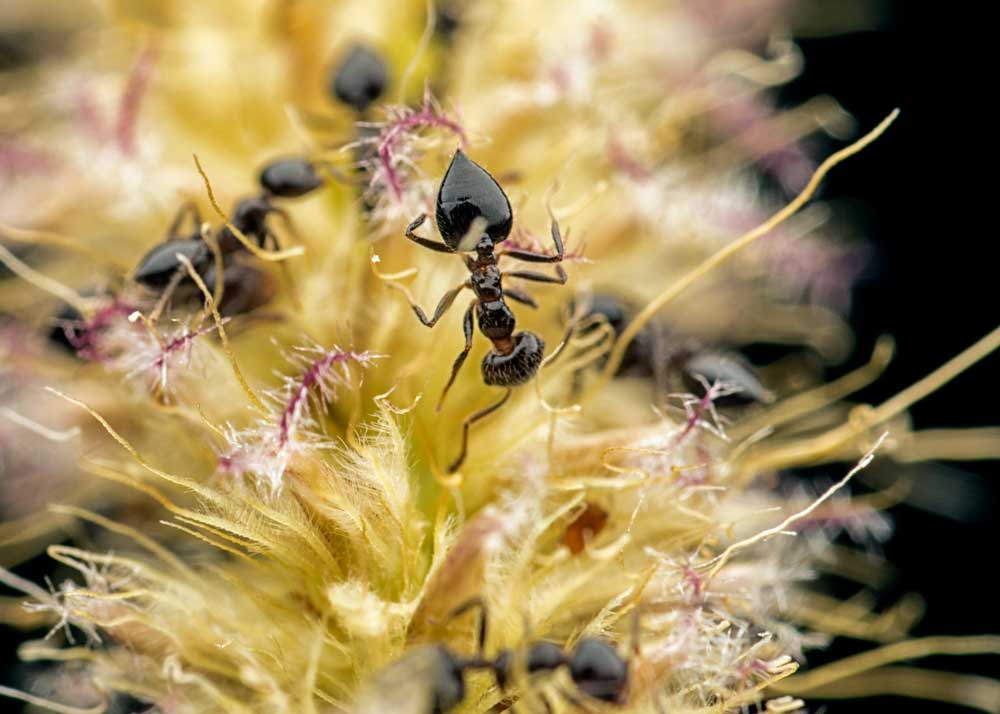
Do flying ants bite? What about carpenter ants?
Killing Sugar Ants For Good
Sugar ants are anything but sweet. To keep them out of your home, you’ll need to be smart, efficient, and diligent about your extermination methods. Good luck!
- About the Author
- Latest Posts
Bryan Haines is a co-founder and writer at The Buginator. And is working to make it the best resource for taking back the outdoors from biting, stinging pests.
He also blogs about travel at Storyteller.Travel and photography at Storyteller Tech. Bryan is a partner at Storyteller Media, a publishing company he runs with his wife, Dena.
